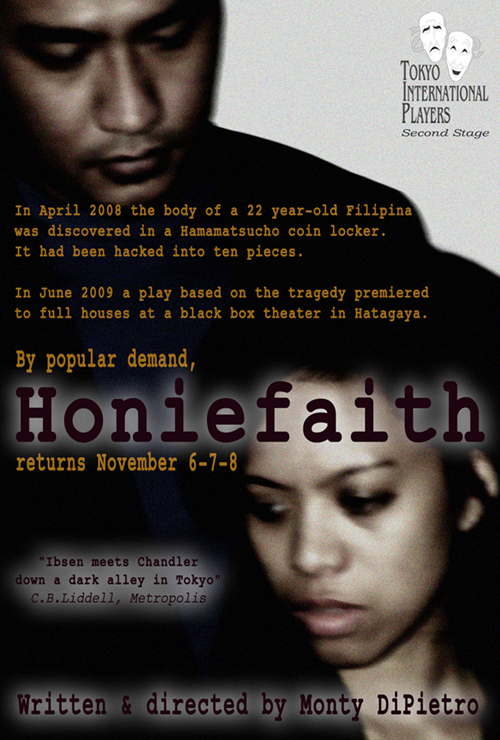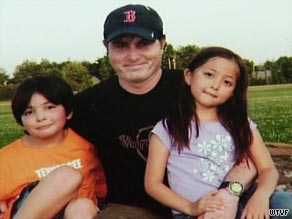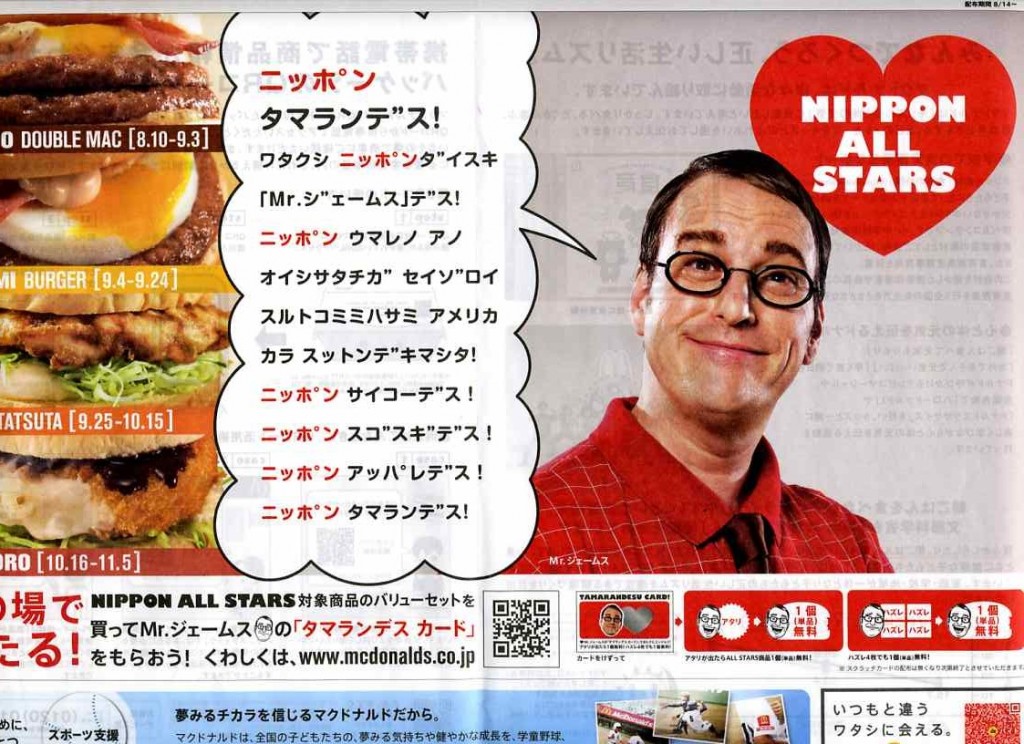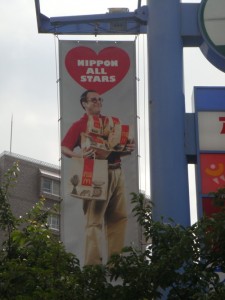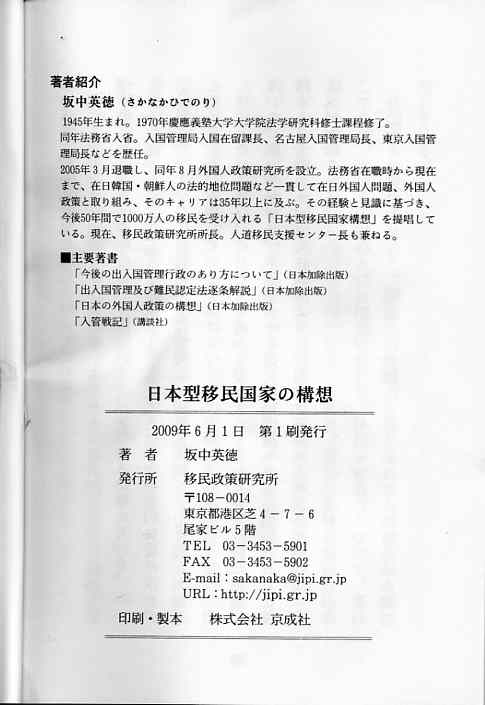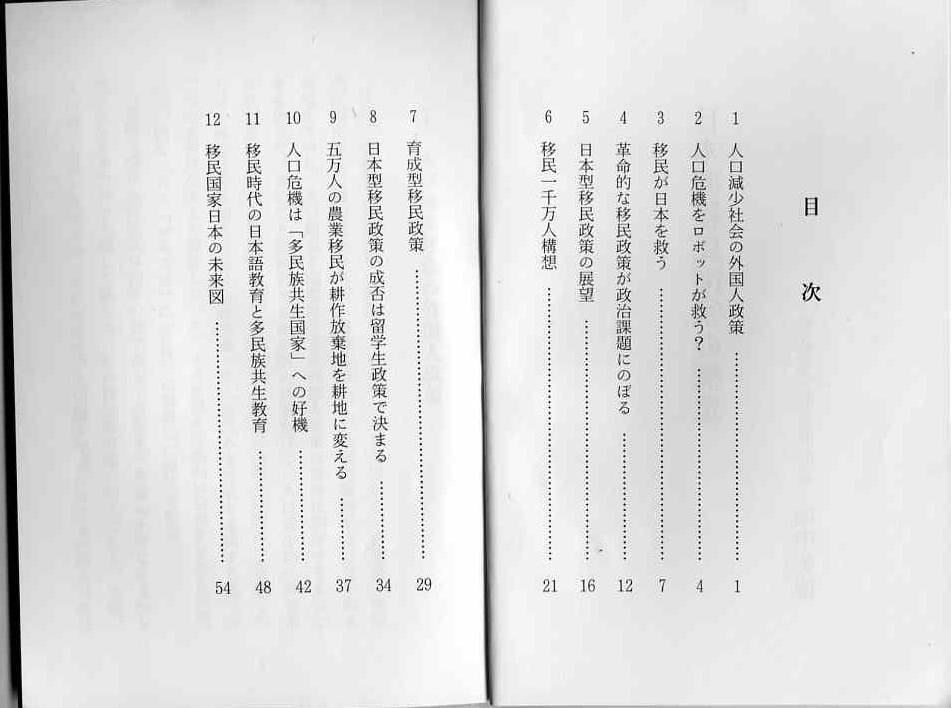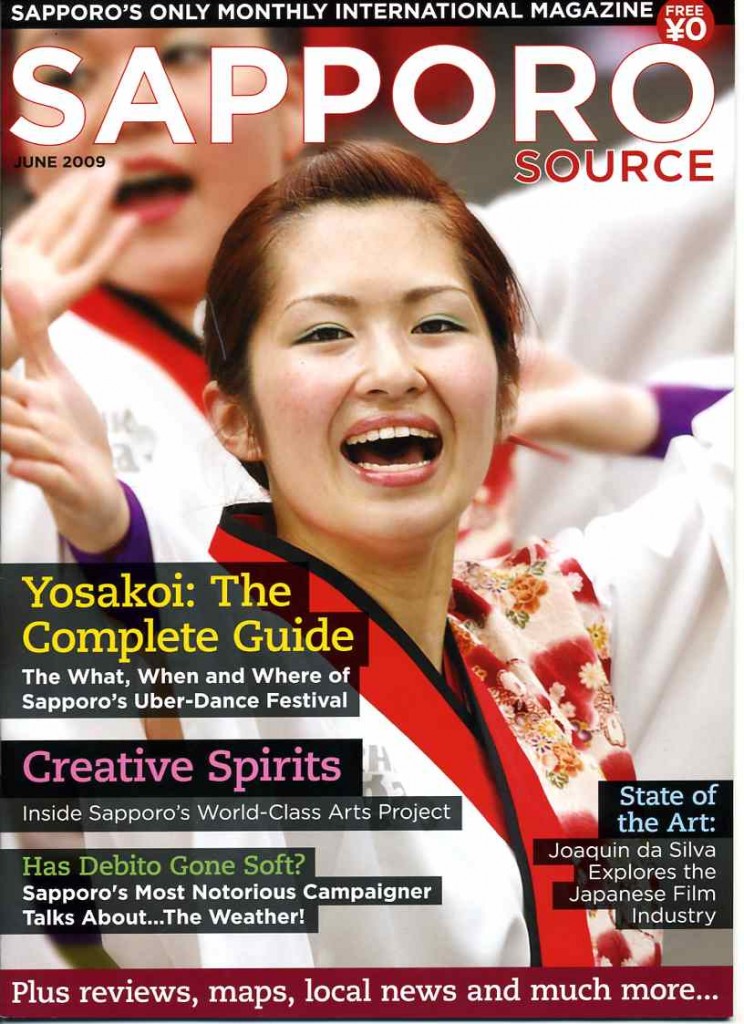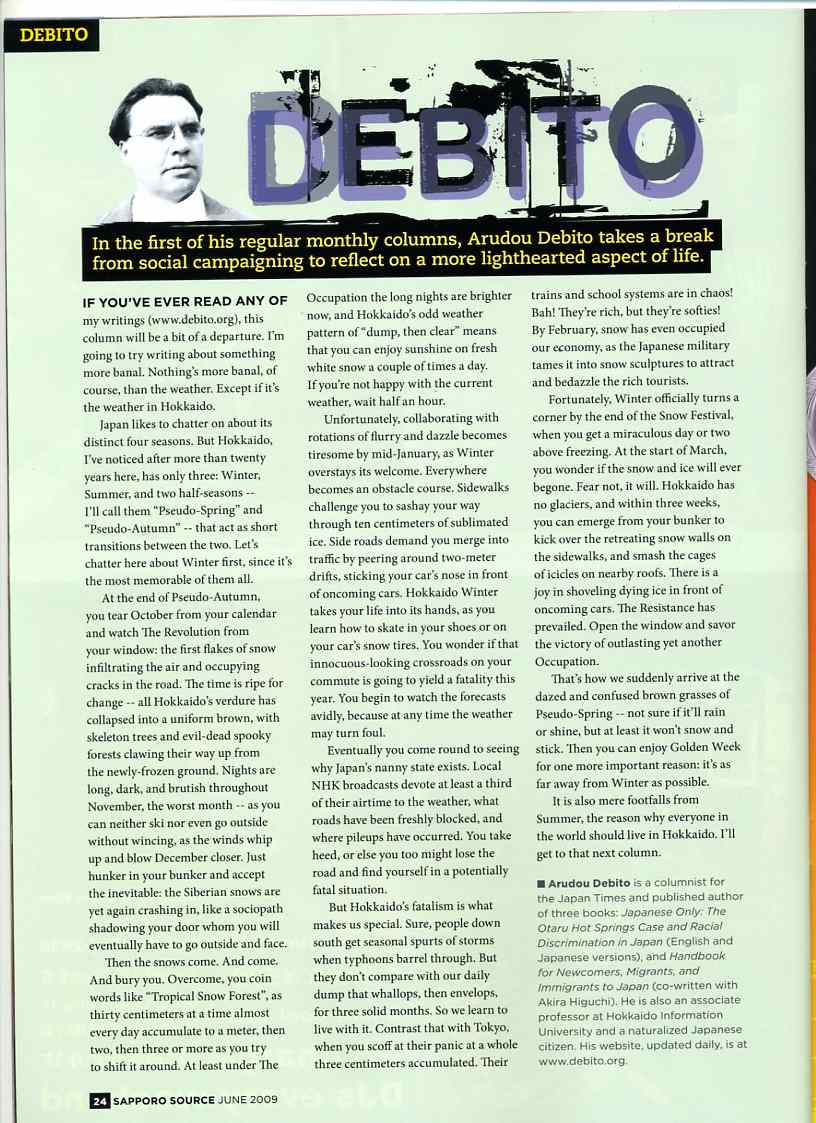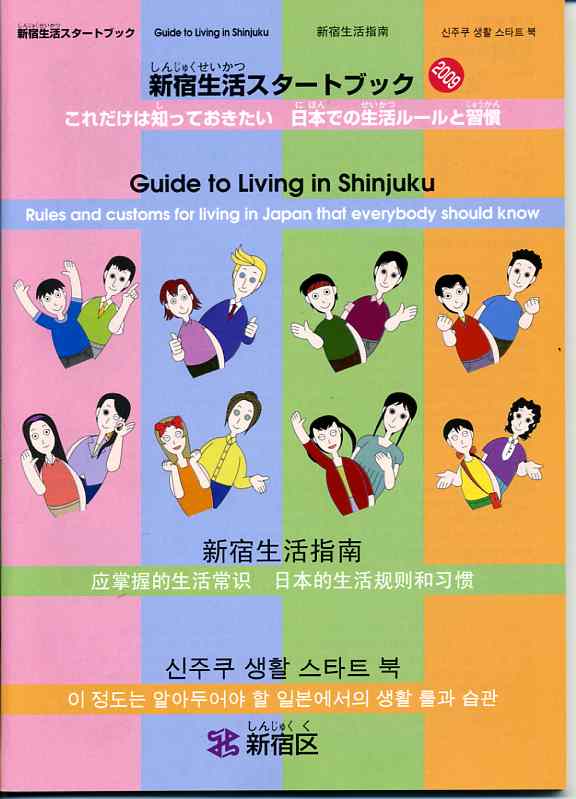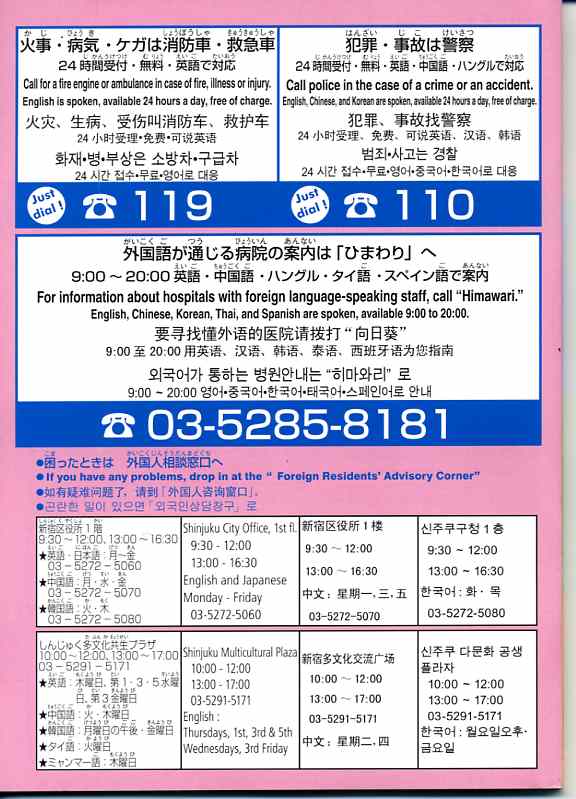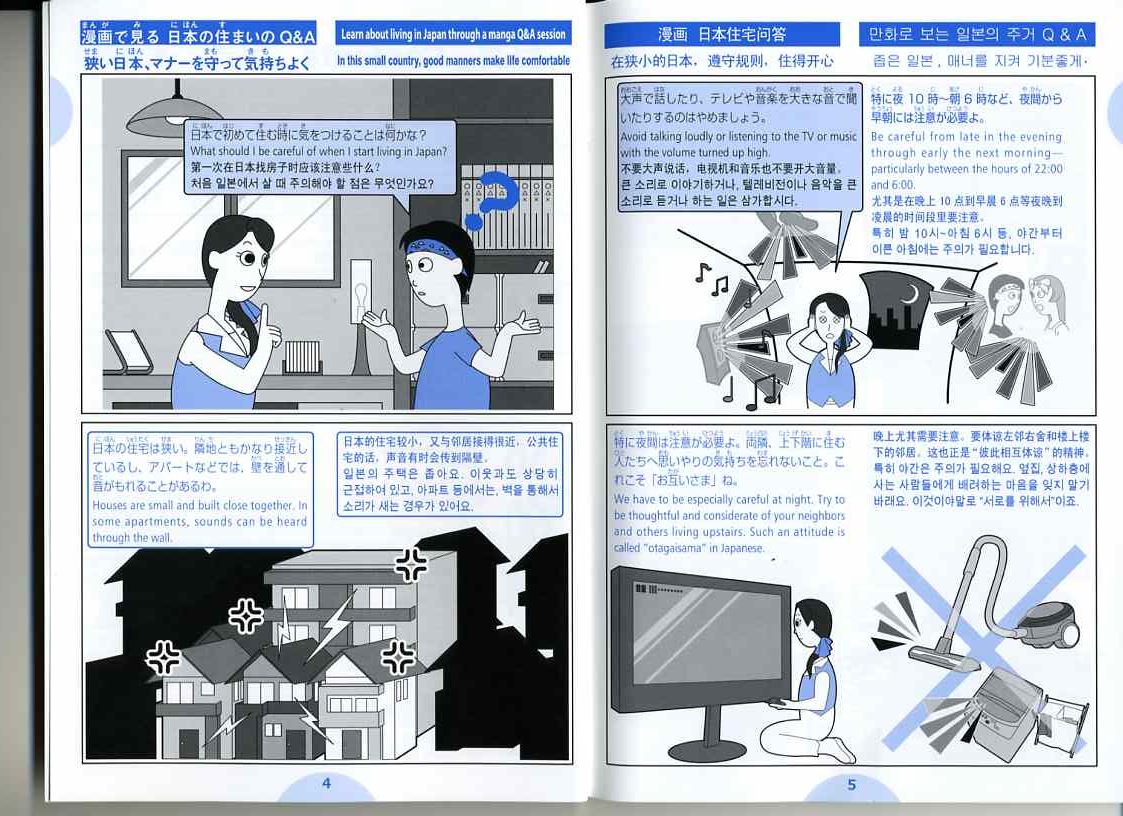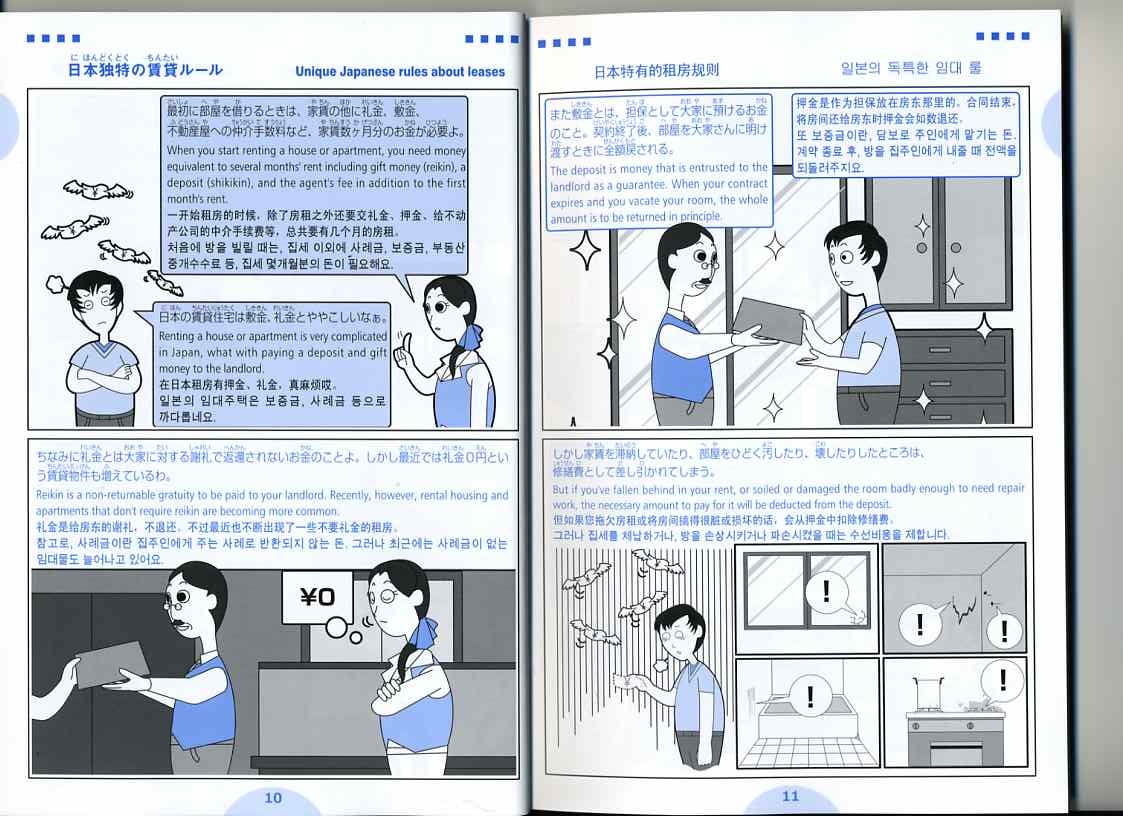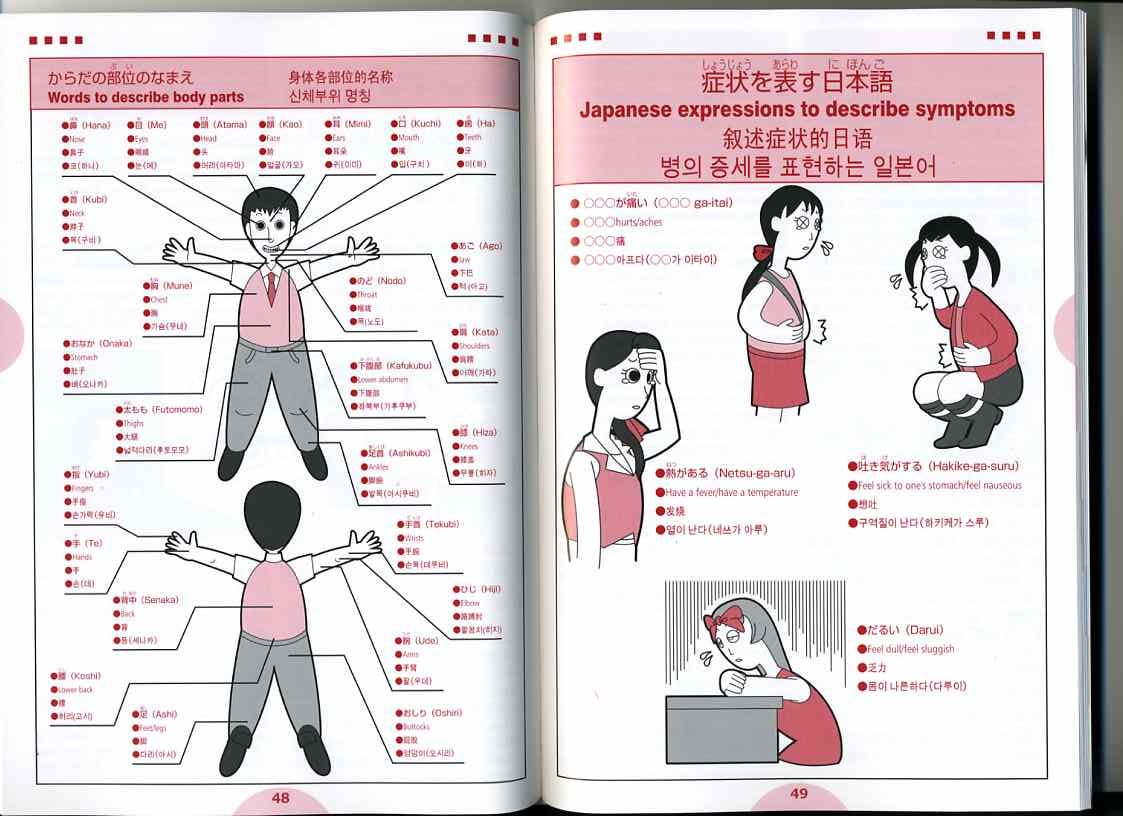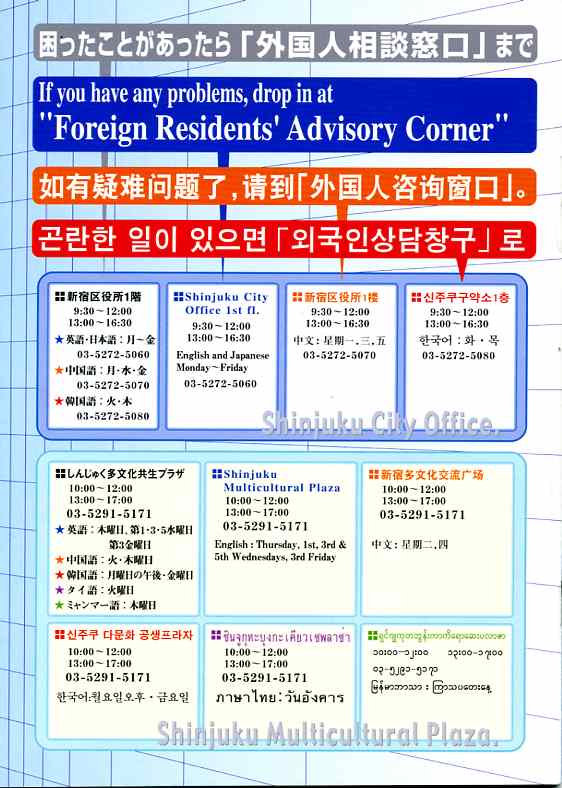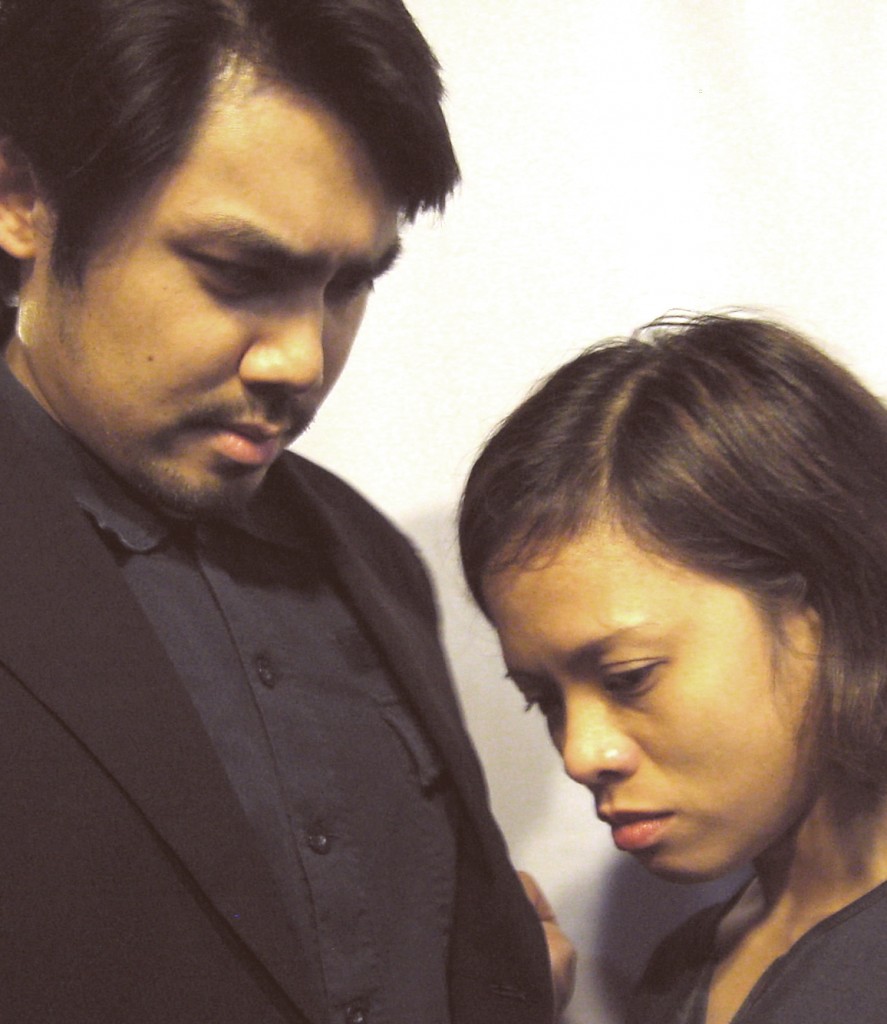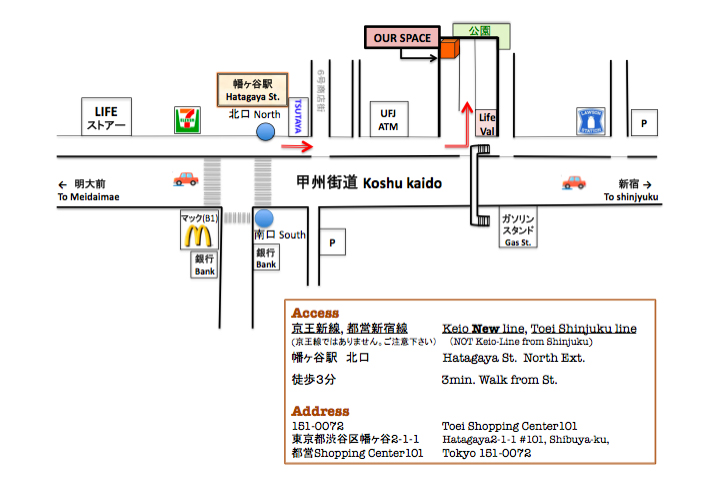mytest






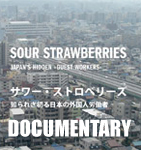 twitter: arudoudebito
twitter: arudoudebito
Hi Blog. Turning the keyboard to James Eriksson of Monbetsu (he of the lousy summer this year), who is using his time productively to write an expose of the Bio-Gas market. How the “eco” fad is being used as a means to justify yet more bloat and corruption, with the domestic media (with its lack of ability to do investigative journalism — or even simple mathematics) a willing accomplice in perpetuating the lies being told within the industry. Read on, I dare you, and wonder how people could ever be fooled by all this. Arudou Debito in Sapporo
=========================
To the readers of this essay on debito.org. The following news article appeared in the English Language Daily Yomiuri newspaper July 14, 2009. My initial reaction to reading it was to attempt a Letter to the Editor which normally the Yomiuri would not publish because it questions the quality of Yomiuri’s own journalism. Bearing that in mind after Debito saw what I had written — (I ask his opinion once in a while) he offered to post it on his blog. Where someday it will be read by ‘real’ journalists who ask real questions. The article below illustrates several problems mentioned many times on Debito.org:
a. the low quality of normal newspaper journalism that the Japanese reader has available to him.
b. The “public works” boondoggles and dependencies that are far too prevalent in Japan.
c. The inability of Japanese bureaucrats and politicians to see the economic folly of the models of development they sponsor.
d. And finally why both the political class and the bureaucratic class need to develop a real fear of the voter.
After a conversation with Debito I was challenged to offer not only a criticism but an alternative. Here it is. Currently I do not have the time (I am a slow writer) to polish this essay and to correct its obvious flaws.
The Yomiuri article follows with the link where it was gotten. According to my information Yomiuri articles come off the web after very few days.
Then the first draft of my Letter to the Editor, then the general essay.
///////////////////////////////////////
Biogas attracting attention as new fuel
Kunio Kobinata / Yomiuri Shimbun Staff Writer
July 14, 2009
http://www.yomiuri.co.jp/dy/national/20090714TDY04301.htm
A plant established in Shikaoicho in the Tokachi region of Hokkaido in March 2007 to produce biogas from livestock excreta is now the largest production facility of its kind in the nation.
The Hokkaido government built the plant at a cost of about 1.7 billion yen on about four hectares of land surrounded by wheat fields and ranches located about three kilometers east of the center of the town.
The plant is operated by a union comprising the town government and local dairy farmers.
On an average day, a single milk cow discharges more than 60 kilograms of excreta. Scattering the excreta across fields fertilizes the soil, but the strong smell is unpopular with nearby residents.
If the excreta is left unattended outdoors, it naturally ferments and discharges into the air methane gas, which is said to have greenhouse gas effects about 20 times stronger than those of carbon dioxide.
If methane gas is used as a fuel, energy resources can be saved because other energy sources are not used, despite the fact that burning methane gas releases carbon dioxide.
However, as methane gas is released into the air regardless of whether there is any intervention, there are attempts to produce biogas from livestock excreta and food scraps for use as an energy resource.
About 60 to 70 tons of livestock excreta are brought to the Shikaoicho plant each day. The excreta is fermented for a month in sealed tanks at 38 C to extract methane gas.
Hydrogen sulfide is then removed from the gas and the methane gas is burned to generate electricity with a dynamo.
The plant currently generates about 3,500 kilowatt-hours of electricity each day. As nearly 60 percent of this energy is used by the plant itself, there is a daily surplus of about 1,500 kilowatt-hours.
The plants’ net output is equivalent to the electricity consumption of about 145 ordinary households. The surplus power is sold to Hokkaido Electric Power Co., and the plant records an annual profit of 2 million yen to 3 million yen.
Excreta that has been wholly fermented gives off a much less noxious odor than its untreated counterpart. The liquid leftover after the methane gas has been extracted is used as a fertilizer for farming fields.
Mikio Ando, who supplies the Shikaoicho plant with excreta from his 150 cows, uses the liquid fertilizer on his pasture.
“It’s an attempt at creating a recycling-oriented society,” Ando said proudly.
Motohiro Oi, chief of the town government’s agriculture promotion section, said, “[The methane gas extraction] can help reduce foul smells and prevent global warming.”
There are more than 20 similar facilities in Hokkaido. But building plants of this type requires land and a large initial capital investment.
In Germany and some other countries, the government, as part of its national policy, sets prices relatively high for electricity generated by such plants.
Kunio Nishizaki, a specially appointed professor of Obihiro University of Agriculture & Veterinary Medicine, said, “The use of methane gas made from livestock excreta has great merit in terms of fully and effectively utilizing farming communities.
“The government should assist with the promotion of these energy sources in addition to solar power generation and other approaches,” he said.
===
Biogas piloted in Koto Ward
Entities including Koto Ward Office and Tokyo Gas Co. started this fiscal year a full-fledged pilot scheme for generating biogas by fermenting combustible garbage.
With more than 200 tons of combustible garbage produced by households in the ward every day, officials see the mountain of garbage as a potentially rich source of energy.
The pilot operation is taking place at a plant installed in the ward’s facility for environmental education. About 300 kilograms of mixed garbage, including food and waste paper from eateries and companies in the ward, are placed in the fermenter each day.
The temperature inside the fermenter is kept at 55 C, and biogas is produced by each day’s garbage after it has been fermented for about two months. Paper, which contains more carbon than other perishable garbage, takes longer to ferment but is better for generating methane gas.
About 63 cubic meters of methane gas can be generated at the facility each day–equivalent to the total energy consumed by about 30 households. The gas produced can be mixed with town gas, the main component of which also is methane, to make it suitable for everyday use.
Kazunari Yamamoto of Tokyo Gas said, “We’d like to raise the percentage of biogas [in the mixed gas] as much as possible.”
Residue remaining after gas has been extracted is expected to be used as fuel. The pilot project is to continue until next fiscal year. Naoki Ito, manager of the ward’s Environmental Affairs Division, said, “We hope to use biogas energy to supply hot water and air conditioning to the athletes village [scheduled to be built] in the ward if Tokyo hosts the Olympic Games in 2016.”
(Jul. 14, 2009)
/////////////////////////////////
LETTER TO THE EDITOR (unpublished)
Doing the math. For Shikaoichi’s Biogas Plant
By James Eriksson
Kunio Konibata’s article “Biogas attracting attention as new fuel” leaves this letter writer wondering if Mr. Konibata slept through his Junior High School math class.
Let’s see now 70 tons of manure a day at 60 kg per cow is an equation 70,000kg divided by 60 equals a plant that handles the excreta of 1200 cows. Okay 6 dairy farms. Well, 8 farms of size of Mr. Ando’s above and only 4 farms of those households where I have the pleasure to teach their children.
The plant was built at a cost of 1.7 billion yen and returns a profit of 2-3 million yen. Let’s see ….3,000,000 divided by 1,700,000,000 that’s a rate of return of .17 percent …less than two tenths of 1 percent. Is that before or after the plant makes payments on the monies borrowed to build it? What allowance is made for replacing the plant when it breaks down and wears out? Mr. Konibata didn’t ask or the Yomuiri editors didn’t think it important to tell us! The Hokkaido Government built it …but who financed it? Who okayed it? Where did the money come from?
Did Mr. Konibata think it important to find out what similar plants cost to build and run elsewhere in the world? And what are the reasons for the differences?
Mr. Konibata thinks it important to tell us that in Germany( a pioneer in making biogas) the government mandates the purchase of biogas generated electricity at a premium but not how much a premium compared to Hokkaido’s already high price of electricity. Let’s see making the Hokkaido consumer pay 300% of the current electrical price would raise the rate of return on the investment to what?
In cases like these what is needed is a forensic accountant. Maybe if the entire staff of the Yomiuri Shinbun were forced to invest their pensions in projects like these they would learn to ask the questions that make up responsible journalism. (end of letter draft)
Don’t get me wrong I believe alternative energy is needed, biogas production from manure is an excellent way of reducing greenhouse gases while moving from fossil fuel consumption to a process that creates CO2 from a cycle where the CO would have normally been created in the decaying of grass and manure and removes CO2 from the air when new forage corps are grown. What fuels my anger is that this…this project with its astronomical costs and terrible rate of return is a disgrace; a disgrace to Japan, a disgrace to Hokkaido and a disgrace to the good name of Japanese engineering. There was another project, a wind farm project in Hokkaido that had to declare bankruptcy. A town in Hokkaido financed a dai-san sector project where the rate of return was ‘mistakenly’ calculated by someone missing a decimal point!! These projects are alternative energies biggest enemies….swallowing wasteful amounts of government monies and creating an entire industry whose goal is to maximize “there’s gold in this there green fad” instead of to economically produce green energy. Producing not a bang but a whimper for the taxpayers buck.
Let’s do some more math round down again to 50kg a day of excreta per cow. 70 tons divided by 50 is 1400 cows. The capital cost of the plant was 1,700,000,000 yen divided by 1400cows … so …This plant was built at the per head cost of 1,214,285 yen per cow. Let’s do that in dollars 100yen to the dollar exchange rate. Today’s rate was around 93 yen to the dollar.. Okay $12,142. per head. A capital cost of $12,142 dollars per cow.
The links given below take you to web sites in the US that comment on and analyze methane digesters in America. Wading through them you will notice that capital costs there are between $500 and $2000 per cow! So basically, the ‘wise’ people involved in this Shiraoichi joke have done the equivalent of paying $150,000 each for a fleet of 110 hybrid Priuses. How many jobs could have been created if Shiraoichi town could have built digesters at America’s capital costs? How much greenhouse gas release could have been prevented if 8,000 cows had their shit turned into methane?
SOURCES
http://www.alliantenergy.com/wcm/groups/wcm_internet/@int/dochttp://www.mnproject.org/pdf/agstar%20report%20full%20update.pdfuments/contentpage/013122.pdf
http://www.epa.gov/agstar/news/digest/index.html#two $1325
http://www.epa.gov/agstar/pdf/conference04/wichert.pdf page 15
http://www.biogas.psu.edu/casestudies/pennengland.pdf
An Assessment of Technologies for Management and Treatment of …
File Format: PDF/Adobe Acrobat
Biogas from anaerobic digesters has been used to produce heat and power for decades …… production and air emissions from a methane digester before and after using the product …… The capital cost per head is estimated at $392.00. …
http://www.arb.ca.gov/ag/caf/dairypnl/dmtfaprprt.pdf – Similar
http://www.saukherald.com/main.asp?SectionID=12&SubSectionID=48&ArticleID=8364&TM=42177.3
http://www.mnproject.org/pdf/agstar%20report%20full%20update.pdf
This writer is left seriously wondering if Mr. Konibata, his editors, and the persons involved in the Shiraoichi project have anything inside their heads besides “shit for brains”. And also wondering if Japan would be better off if they themselves were used for feedstock for Shiraoichi’s biogas plant!
A windfarm is called a windfarm because it sites multiple towers in a single location. Leading to efficient construction and very efficient maintenance, 1 maintenance crew minimizes travel time going from 1 tower to the next.
A single tower located 1 hour a way from the next tower is not green and any amakudari staffed Tokyo office funding them has proven their incompetence. A single tower only makes economic-green sense only if it saves transmission losses and local electric consumers can buy power at a cheaper rate.
Hokkaido really needs jobs, good jobs, fulltime jobs, even construction jobs but when they always happen in permanent money losing gov’t boondoggles that we have come to depend on they do several things.
1 They drive out our entrepreneurial thinkers. In a version of bad money drives out good. Bad unaccountable investment drives out good investment and entrepreneurship.
2 They distort the demand curve for construction services. So real industrial development has to bid against boondoggles.
3 They prevent efficiency, technological creativity and learning in the construction industry. Turn construction firms into beggars that cannot stand up to bureaucracy when bureaucracy insists on counterproductive, inefficient and unnecessary regulation.
4 They create a continuous cycle of public works dependence and lack of accountability.
5 They create in the mindset of the business, political and bureaucratic elite a continuous fantasy world somewhere along the lines of the movie “Field of Dreams”. If you build it they will come…well they aren’t coming and they haven’t come and we not only have gone further into debt to build it, we have to pay for its continuous red ink. While our tax base is not strengthened, by this. We end up becoming Yubari’s. Going into increasing debt building projects that end up being operated at below cost. A film festival, golf course, a camp ground, an onsen costing local yen (begged from Tokyo) but run below cost subsidizing the holidays of the few people who come from elsewhere to enjoy them. When this finally becomes unsustainable it is local services that will be cut to pay for them.
6 They create a labor force that staffs underutilized projects where time hangs on workers hands. Televisions get installed in staffrooms and the workforce learns to expand the time needed to complete a task so they are not bored. Counter people who see 1 customer an hour and then 15 in half an hour.
7 Japan’s green energy industry cannot deliver cost effective green energy projects. They are driven by and have always been driven by the bloated cost, design, thought processes and regulatory inefficiencies of government run or funded projects. Entire industries begin to live in Fantasy worlds.
So what is a workable alternative? That’s really easy but somewhat technical.
The government gives me, well a corporation I set up, not even me. but a totally independent transparent and not connected to any existing entity corporation. The “Inaka Hokkaido Agricultural Electric Development Corp”
1,000,000,000 yen every year for 3 years. Twice as much as the Shiraoichi project cost. We hire from overseas 1 extremely competent biogas engineer fanatic. And 1 extremely competent construction manager. Dynamic cost managers who can demand of a supplier why they can’t deliver a needed input at a competitive cost and with the will and knowledge to search out alternative suppliers. Men or women rude and strong enough to throw ‘red tape bureaucrats, those who waste time, or those who don’t deliver off the place. People who don’t owe favors and never ask for favors. People whose job it is to build digesters not relationships.
**People of the same trade seldom meet together, even for merriment and diversion, but the conversation ends in a conspiracy against the public, or in some contrivance to raise prices**
— Adam Smith, Wealth of Nations Vol 1 p412 Methuen 1950
We set up a new construction company that avoids the overhead, tea lady and high cost of doing business of normal Japanese construction companies. It is forbidden by law to solicit political donations from us or us to give political donations.
The government also gives us a hunting license to shoot bureaucrats and Ag-coop officials on sight. We receive 1 building permit and never have to go through the ‘regulatory’ costs, hoops and useless reports when we build biogas plants. Sending blueprints to bureaucrats who can’t understand what they see on them.
A forensic accountant rips through the accounts of the Shiraoichi project, not looking to “punish’ anyone but so we have access to knowing where the bloat is and can learn what suppliers to avoid.
(When my wife and I built our house we were told by persons in the construction industry that our blueprints had to be re-drawn so that the ‘city hall’ would understand them. Every change made to our blueprints ‘weakened’ the structure and in several cases made the actual structure unsafe)
Because of the nature of the Civil Service exams bureaucrats have little or no background knowledge that helps them understand engineering or construction.
We set up a construction team that doesn’t have to reinvent the wheel every time a biogas plant is built. So we build biogas plants to a common design getting good and efficient at it the way Toyota builds cars. It would be safe to say that most if not all of the 20 or so biogas plants in Hokkaido were separately ‘custom’ designed and engineered. With hundreds of hours of time being wasted drawing blueprints, making permit applications and making reports to people who don’t know how to read them. With the majority of equipment used in them having to be ‘custom’ designed and fabricated.
Our construction team moves directly from 1 project to the next. Our design team only has to make minor changes in moving from 1 project to the next.
Architects and design engineers operate in Japan usually on a percentage of the construction cost. There is a built in ‘incentive’ to over engineer public works projects and to also require unnecessarily items or unnecessarily expensive options. (my favorite examples are top quality solid hardwood flooring going into a municipal funded ski lodge…to be walked on by people in ski-boots so the floor has to be covered in expensive rubber matting….and a mushroom so over engineered it would be like a car with 2 engines)
Using the pre -existent slurry tanks at farms in a municipality we take over excreta management at farms one at a time by lottery as long as 1. the farm has some sort of existing system we can use and 2. it comes close to making sense by scale. Basically we won’t do anything for the 70 year old operator who is milking 30 cows except make it possible to truck to the nearest on- farm digester. We build utilizing as much as possible the current facilities state of the art automated methane digesters. (what are the costs in loading and trucking excreta off farm to Shiraoichi’s plant and trucking the fertilizer back to the farms?) Trucking 70 tons a day (5-8 loads) a very short distance is not an efficient use of a truck and driver.
We would have to pay the farmer a nominal charge for the shit and charge him a nominal charge for spreading the post digested organic fertilizer.
This has to be set up so that it is neutral to the economic balance sheet of the farmer. Any industry wide plus benefit to the farmer is a subsidy while any specific site based rewards would create winners and losers. Because all farms would not get the systems at the same time and could not equally benefit. Imagine the envy and strife that this would cause in a small community.
We set up a full time state of the art honey wagon (slang for liquid manure truck) system…and where possible ‘state of the art’ slurry “towed hose injector” systems that minimize the N nitrogen lost to the air (a further saving of chemical fertilizer that more often than not is made from fossil fuel). A full 50% of travel time from traditional liquid and solid spreading is spent towing an empty spreader while over 80% of towed hose injection is actual spreading.
so as long as it is possible we have drivers and honey wagons in full time operation. Minimizing both labor(waiting for the honey wagons to be filled) and capital spreader costs. The farmer is thus freed from the costs of having to keep and maintain manure spreaders in operation only a few days a year.
Hydrogen sulfide gas is scrubbed from the methane and sent to any fertilizer manufacturer that will use it.
Our electrical generation internal combustion engines are set for automatically timed operation to generate power at the ‘solar’ production peak so Hokuden pays us the mandated “photo-voltaic rate”.
At the end of the first three years when we have constructed as many plants as possible with our seed capital we do the math and return our seed capital slowly 10% a year in the form of 10 or 20 year bonds that pay a reasonable interest rate based on our actual returns. As we get better we can reduce construction costs to that approaching Germany and the USA.
For your information construction wages are higher in both countries it is ‘efficiency’ that keeps US construction costs down. We can then have realistic rates of return on investments that equal and beat similar investments in the USA and Germany.
In return the central government guarantees new bonds we issue that pay for the new plants we continue to build. Using a predictable rate of return we can issue bonds that pay much better than alternative non-risk investments in Japan. Purchase of such bonds is then restricted to the local municipal governments in the towns we build methane plants. We create a computerized 1 day a month bond market where outside financial institutions bid up the price of bonds to where the rate of return equals the lower rates of return elsewhere. First tier bond purchasers (local governments) are then mandated to use all the profits from sales to pay down and off the mountains of debt they have accumulated following Tokyo’s economic development models.
We ourselves don’t get paid very much until our operation is successful.
Within 3 or 4 years our business model can be cloned and set up in other parts of Hokkaido and agricultural Japan. A singular infusion of capital from the National government can thus result in a sustainable self-supporting industry with considerable growth potential. But only if the government and construction tribe stays out!! Only if we get the freedom to slice through any structural and regulatory obstacle that raises our costs or slows us down!!!
I am convinced that once the Aegean Stables of bloat, political kickbacks, inefficiency, over regulation, fraud and outright incompetence are driven out of the system Hokkaido and Japan could have a new industry creating jobs that would all of us could be proud of.
Our expertise can be also channeled into cost effective micro-hydro and small to medium scale wind projects in which we deliver power on to the grid minimizing ‘transmission losses and mandating Hokuden to charge the municipally based consumer exactly what they offer us. (Hokuden still makes a hook up fee and money on the residual power they sell the local consumer)
“Yumi-cho” a fictional name for a real town in Hokkaido builds a windtower on the hill overlooking it’s main population center. The Hokuden gives the town about 14 yen per kwh for the power it buys and turns around and sells it to households within 1000meters at rates between 19 and 29 yen per kwh.
The following synergies suggest themselves:
1 mounting photo-voltaic panels on existing and new roof structures. Including PV generating panels that are incorporated into the building materials.
2 the use of solar thermal ‘hotwater’ panels to generate some of heat that keeps the digesters operating at optimum conditions as well as cleaning, domestic hot water, and milk room needs
3 the use of ‘microwave heating’ ie more efficient that resistance heat again to heat water for the digesters as well as cleaning, dhw and milking room needs.
4 constructing ‘state of the art’ energy efficient greenhouses to utilize the waste heat from the generating engines as well as to enrich the air inside them with CO2 from the combustion gases.
In rural Japan there is the environmental concern, engineering know how, work ethic, and pent –up energies waiting to break out if we ever get a chance to break out/past the failed models of development followed for the last 40 years.
These visions and desires do not generally exist in the civil service whose educational background to pass the civil service test is woefully incomplete. It usually does not exist in the construction tribe who have little experience outside of bloated public works dependencies and resulting political donations. It does not exist in the political elite who can’t read a balance sheet and don’t know the meaning of the term to “stand guard over the public purse”.
It does not exist in the Hokkaido Development Agency who have funded hundreds if not thousands of money losing bloated projects. It does not exist in government officials in Tokyo where sidewalks that no one will walk on are thought to be ‘infrastructure’. Unfortunately the leadership for the first few years will have to come from elsewhere. Japan cannot afford “Potemkin Villages” masquerading as green projects. The world faces an environmental crisis where cost effectiveness and financial sustainability are absolute requirements.
ENDS






![]()
